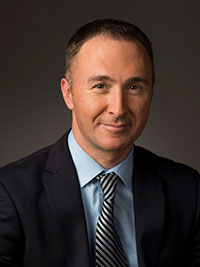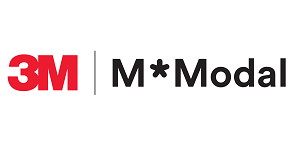Automation from documentation capture to code: Insights from healthcare finance leaders
As labor shortages surpass financial challenges as the top issue facing healthcare leaders, more organizations are looking at automation — particularly in revenue cycle — to increase efficiency. In healthcare, where documentation ambiguity can trigger a cascade of rework, use of artificial intelligence (AI) software to evaluate documentation integrity and coding accuracy in real time can help clinicians focus on what they do best: Take care of patients.
But while demand for automated solutions in healthcare is rising, knowing how to gain optimal value from automation is critical. Physicians, coders and quality departments must have confidence in the accuracy of automated tools, especially when clinical decisions and reimbursement depend on the quality of documentation captured. Managing the culture change associated with the move to automation also is vital to success, given that already overloaded employees may be resistant to learning new technologies and processes.
In this HFMA executive roundtable, seven hospital leaders discuss the role of process automation in navigating the documentation and workforce challenges facing healthcare today. They also share tips on strengthening return on investment (ROI) and engagement.
What processes have you taken on around automation?
Connie Perez: Our whole world has changed, and our evaluation of how we approach coding is changing too. It used to be that when we lost a coder, we could easily find one from a contract agency. Today, we can’t find anybody. So now, we are looking at our whole universe of accounts and organizing them by visit type to determine: What could be automated? What could we outsource? What needs to be done by a coding intern? What’s so special that we may want to outsource it to a specialty group? This has shaped how we outsource, automate and delegate internally.
Tushar Naik: We know that success with automation, such as AI and machine learning, depends on the accuracy of our data. And currently, much of our focus is on cleaning up our data and integrating it across different processes within the revenue cycle. Most healthcare organizations struggle with having their data spread across different platforms, making it difficult to gather data and then ultimately make sense of it. We need to be able to trust our data before moving toward automation.
Jon Neikirk: Froedtert has saved millions in labor expenses by leveraging outpatient simple visit coding automation functionality in Epic, but we’d love to get to the point where we can take less complex inpatient charts and automate the coding as well. That would require a higher level of confidence. Obviously, we’re not going to have a computer suggest how to code a transplant account and just let that go out the door, but with some of the in-and-out, over-the-weekend visits and other simple encounters, if we could develop the confidence to automate, we could reduce those coding costs as well.
Jim Heffernan: We used to use Vertnet, which was a small, phone-type application for doctors to enter charges. This was pre-smartphones, and it wasn’t powerful enough. Since then, we’ve consistently tried to automate more of this type of work. Our goal in the next five years is to fully remove physicians from the coding process.
We started by putting an automated system together around the anesthesia team to really look at concurrency. We used to have more than a dozen monthly unbillable cases due to concurrency issues. Now, we have just one or two.
Bob Trocchi: At 3M, our advanced AI can comb through labs, diagnostic studies, medications and unstructured narrative notes across the entire patient encounter. It maps the clinical concepts it finds to SNOMED, LOINC and other standard ontologies. Flexibility is key, so we start with industry-standard values, then tune the AI to the clinical thresholds and protocols of each organization. The AI can use that information to nudge doctor’s documentation, uncover clinical documentation integrity (CDI) opportunities and suggest or determine the appropriate codes to assign.
What are the challenges your organization faces in gaining value from your investment?
Heffernan: One of the challenges around automation, in general, is: You get an answer, but you don’t know how AI arrived at that answer. When we were developing our solution, we said, ‘We simply can’t have that. We have to be able to tell people what’s going on.’ Statistically, for surgery and anesthesia cases, we don’t have enough volume to get to a high 95%, 96% credibility. But if we could reach 75%, then that’s enough to make coders more confident because now they’re dealing with a curated claim. That’s the kind of efficiency that we’re trying to create.
Susan Searcy: We’re in the same boat. We’re an Epic shop and want to take advantage of Epic tools. As we look at tools to add, heavily demonstrated ROI is going to be huge. We’ve all seen that huge jump in clinical spend, and our payers aren’t keeping up. For us, on the back end, to come in and ask for additional things, we must have a really hard-pressed ROI in order to get the spend approval.
Naik: I think we are underestimating the capability of AI and machine learning. We need some correlation-based studies to get to the point where we are confident in our machine algorithms to do the job for us.
To achieve maximum return on AI, the output must be actionable. This requires good data. The problem with healthcare data and our industry, in general, is that we are still in a very closed environment, and therefore, we don’t have a broad scope of reliable data.
Trocchi: We gauge the ROI in automation from documentation capture to final code based on three primary measures. First, how much do our products reduce the administrative strain on a chronically overburdened clinical staff? Second, can the products enable customers to achieve their goals without adding people or even allow them to reallocate staff to higher priority areas? Finally, to what degree does automation allow hospitals to accurately document the quality of care they deliver and capture the revenue they’ve earned? Demonstrable ROI is crucial.
How is your organization managing the cultural change associated with the move toward automation?
George Farhat: Eliminating the physician component and creating curated claims for the coder could be very powerful. The onus wouldn’t be on physicians, who are already doing their best on tight schedules. Meanwhile, the coder is empowered with better curated charts and options.
Trocchi: In our experience, sharing data from pilot studies that compare the success rates of manual CDI queries versus automation is key to influencing physician behavior change. With this data, we can say, “Here’s the level of opportunity that exists — the ROI. Will you come on this journey with us?” While we can’t guarantee that Dr. Smith, who does a great job of responding to manual queries, will respond to an automated query, we can work with hospitals and health systems to incentivize those actions based on our experience in working with physicians across the country.
Heffernan: For a while now, physicians have felt they’ve been forced to document things a certain way, for a specific procedure or encounter, just to meet documentation compliance and billing requirements — which, by the way, is completely different than anything I’ve ever read on best practices in coding manuals. How do we get to a level of code confidence and chart confidence without forcing burdensome language on providers?
Trocchi: At 3M, all of our suggestions or nudges go through a true compliance review to ensure they are naturally accurate and compliant for coding and billing purposes. The capability of AI to provide nudges in real time creates an effective educational tool that, over time, aims to work its way out of a job as each physician adapts their documentation style.
Conclusion
Every health system has a different approach to automation — including coding automation — but automation holds the potential to be a key driver for improving quality, revenue integrity and improving productivity in a labor-constrained environment. Process improvements and AI can be powerful tools for achieving these goals as long as the AI is transparent and compliant, and the ROI can be easily derived over time.
Panelists

GEORGE FARHAT
Director of revenue and financial services at U.S. Anesthesia Partners, Dallas, Texas

TUSHAR NAIK
Corporate director of revenue integrity at Prime Healthcare, Ontario, California

JON NEIKIRK
Executive director of revenue cycle at Froedtert Health, Milwaukee, Wisconsin

SUSAN SEARCY
Director of reimbursement and revenue integrity at UnityPoint Health, West Des Moines, Iowa

BOB TROCCHI
Vice president, national sales at 3M Health Information Systems, Boston, Massachusetts
JIM HEFFERNAN
Senior vice president at Massachusetts General Physicians Organization, Boston, Massachusetts
CONNIE PEREZ
Vice president of revenue cycle at Phoenix Children’s Hospital, Phoenix, Arizona
About 3M
3M is a technology company that enables health care providers to simplify, automate or outsource their physician documentation, scribing, CDI and coding workflows. For more information, visit www.3m.com/his.
This published piece is provided solely for informational purposes. HFMA does not endorse the published material or warrant or guarantee its accuracy. The statements and opinions by participants are those of the participants and not those of HFMA. References to commercial manufacturers, vendors, products, or services that may appear do not constitute endorsements by HFMA.






